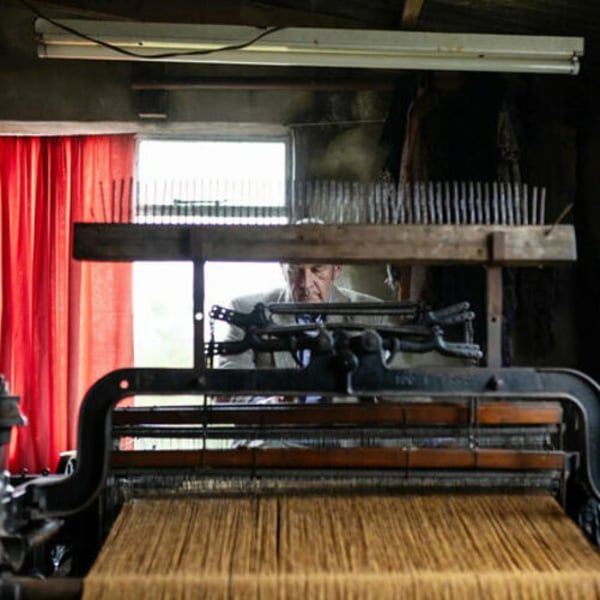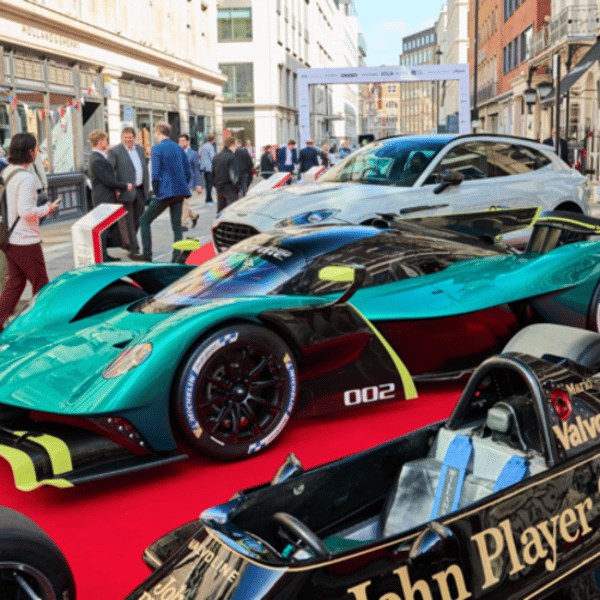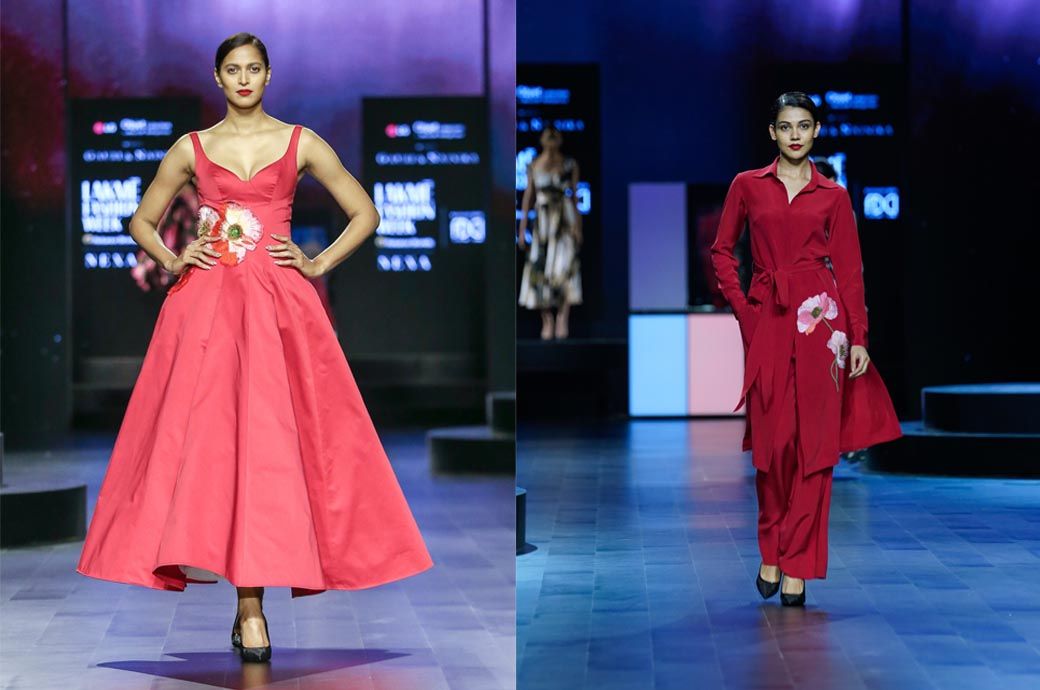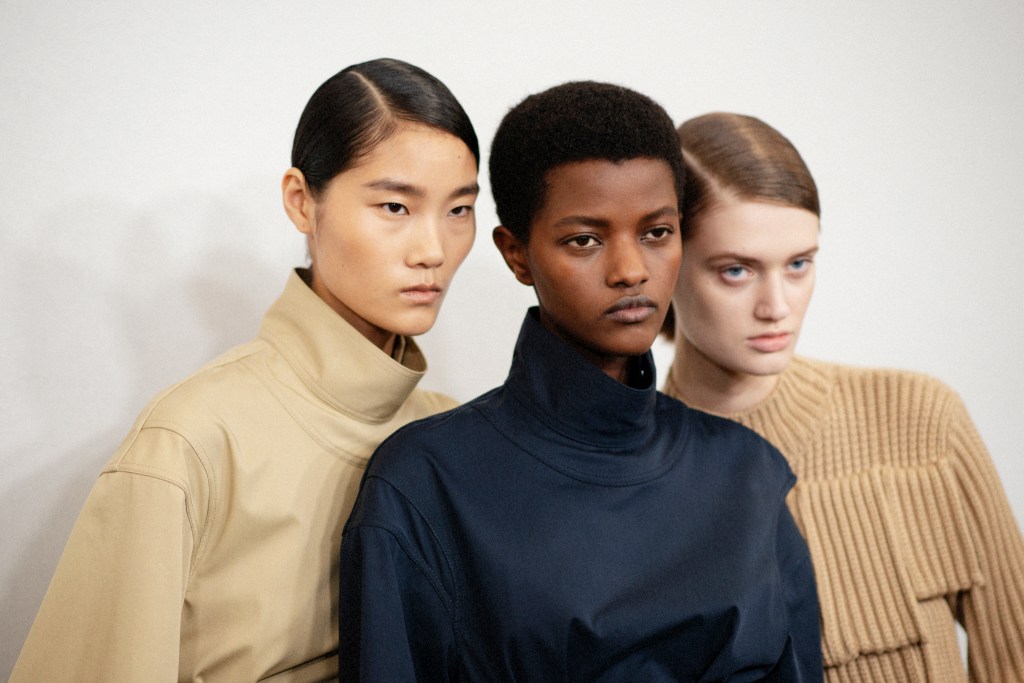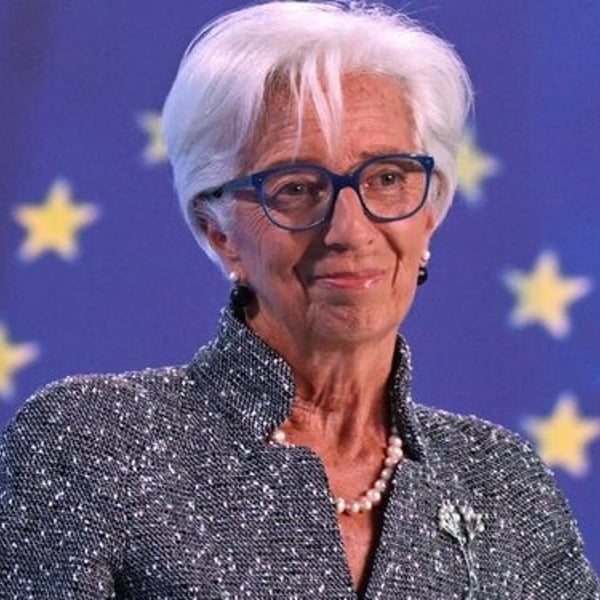By
Bloomberg
Published
June 6, 2025
Harris Tweed, the centenary fabric of islands in the exterior hebrids of Scotland, faces the new winds against. Trump's era on wool imports are increasing the costs of textiles appreciated by luxury fashion houses worldwide.
In December 1957, Reverend Murdoch Macrae traveled from his parish in Lewis and Harris, one of the exterior hebrid islands off the northwest coast of Continental Scotland, aquatic to the Atlantic to face the United States Federal Trade Commission in Washington.
At that time, the tariffs of President Dwight D. Eisenhower about wool imports threatened to trigger an exodus of workers on the island whose livelihoods depended on producing hand -woven tweed jackets, pants and caps, long and late accounts by the Americans, from the Wall Street bankers to the actors of Kennedys and Hollywood. Macrae's mission to protect American protectionism islanders finally succeeded.
However, almost 70 years later, his achievement is being undermined by the commercial policies of another figure with hebridian roots: Donald Trump.
“Trump could portray himself as a man of Scottish inheritance; he could have used the family bible at his inauguration,” says Iain Martin, a fourth generation weaver, but “that man doesn't care. He is not out for himself, no one else.”
Martin is one of the only 150 weavers of Harris Tweed, a fabric made of wool wool and thick. It has been his life. He began to roll coils, a semi -automatized part of the essential process to load thread in the loom, when he was five years old. Now, at 57, weave about 8,000 meters from Tweed every year, in addition to administering a 15 -acre farm and attending 600 sheep. He still uses a loom bought by his grandfather in 1926, located in a workshop along with his own battery of family bibles, a collection of colorful coils and a heavy handbread blanket by his grandmother.
The Diagonal Harris Tweed Tweed badge, exclusive to the Hebrides, has become part of the collateral damage caused by the radical tariffs of the president of the United States on global trade: the measures it defends as necessary to protect US jobs. Although Tweed exports are small compared to the total value of £ 59.3 billion of the United Kingdom's assets sent to the US, the crofters and the weavers of the island still face the same tariff rate of 10% imposed on much larger exporters, even after the Trump agreement with the United Kingdom government reduced the taxes for other sectors. Now they compete under the same terms as the main companies such as the automobile manufacturer Jaguar Land Rover LTD, Diageo PLC, the consumer products group and the fashion brand Burberry Group PLC.
The islanders warn, as Macrae did seven decades ago, that these rates threaten a way of life rooted in the 18th century, in remote islands that today house around 26,000 people, most of them living in Lewis and Harris.
The mother of the president of the United States, Mary Anne Macleod, once was one of those islanders. She grew up in Lewis before emigrating to New York at age 17 in 1930.
“Many islanders are going to work elsewhere and never return home, but for people like me, cropting, weaving, it is in the blood,” says Martin. “That is what attracts me to keep these traditions alive.”
Nike Sparks a tweed rebirth
A British act of the 1993 Parliament protects the manufacture of Harris Tweed, stipulating that producers should use the pure and spun pure sheep wool in the external hebrids, knit it by hand at home and finish it in the western islands. Then they export the fabric to around 55 countries: the United States, France, Germany, Italy and Japan are the largest markets, where designers use it in everything, from luxury suits to sneakers and even whiskey bottles.
The industry has long been sensitive to the whims of American buyers, whose preferences have had a huge impact on the sector. In the postwar era, buying a custom tweed suit was a rite of initiation for many young men. However, when US consumers moved away from wool in favor of the lighter fabrics in the 1980s, Hebidea's tweed manufacturers experienced a sharp recession. Years later, a Limited Edition of Nike Inc. Tweed shoe presented the fabric to a younger audience, causing a rebirth in the 2000s.
The Shawbost mill, which dates back to the 1920s, was reborn as Harris Tweed Hebrides Ltd. in 2007 to capture part of that renewed interest of the United States. Now the largest of the three factories on the island and its largest employer in the private sector, the company generated a turnover of around £ 9 million in 2023, according to the company's presentations. The United States remains its main export market. Approximately 1 million meters from the fabric are produced annually, with the Shawbost mill representing approximately 65% of that total and providing international marks such as Ralph Lauren Corp., Brooks Brothers and Christian Dior Se.
Margaret Ann Macleod, executive director of Harris Tweed Hebrides, describes the 10% rate as “enormously worrying”, particularly because it comes in addition to the highest labor taxes in the United Kingdom and in a context of deceleration of the global luxury demand.
The demand for the fabric also runs the risk of being affected by the high levies that the Trump administration imposed on European Union exports. Although tariffs do not directly affect Hebrid factories, any increase in the final retail price of garments made with Harris Tweed could incite American customers to reconsider the use of the fabric.
Last week, the United States International Trade Court declared illegal Trump tariffs. However, a successful appeal of the White House has delayed a final decision, leaving those affected by the measures that still expect clarity.
“The worst for buyers is to be insecure,” says Macleod. “When there are unknown costs that we cannot quantify, it can make a difference between them by selecting a textile of the British heritage or not. They can choose to delay that purchase, reduce the amount or choose to get out completely.”
About 15% of Harris Tweed Hebrides's annual production is already sold to Asian customers. The mill is now working to strengthen ties with markets such as South Korea, its fastest growing market, and Japan, which Macleod will visit at the end of this year as part of a British commercial delegation. The company is also reviewing its prices (the fabric is sold to £ 55 per meter for individual consumers, in response to rates.
However, quickly pivoting new markets is not easy for a “slow fashion” business, where completing an order can take up to three months. The industry must also intensify efforts to combat falsification and increase the knowledge of the brand in the newest markets such as China.
“We are not going to offshore production; legally we cannot do that, even if we wanted to,” says Calum Iain Maciver, interim executive director of the Harris Tweed authority, a legal body responsible for protecting the reputation of the fabric. “Return manufacturing plants to the US.
From the sheep to the store
Harris Tweed production is a complex months of months that begins with pure sheep wool bundles mixed from the entire United Kingdom, not just hebrids. The workers of the mills dye the wool fibers using one of the 60 base colors and then rotate them to achieve the rich tones of the fabric. They weigh and mix wool of different colors according to precise recipes created by the mill designer to produce a wide range of tones.
Next, they send wool through cardado, a mechanical hairstyle process that unravels and mixes the fibers, creating a caramel thread with flowers in tones ranging from pink red to soft or earthy green brown. Then, the workers turn the thread to strengthen it, preparing it to be in the coils. They organize thousands of warp threads, a term derived from the old Nordic varp, which means “the cast of a network”, next to the side along the fabric. Then they separate the threads into parallel strips and roll them into a large beam.
The factory delivers the prepared thread and a employer card to one of the work weavers on behalf of the island. The weaver presents the colors of the plot, the horizontal wires woven through the warp, which create the pattern in Zigzag distinctive of the fabric. After weaving, the mill is washed, dries, presses steamed and cultivates the fabric before preparing it for inspection. If the fabric complies with the quality standards, the Factory jungle with the Orb certification mark of the Harris Tweed authority (HT) and prepares it for export.
This intricate process uses 300 workers and weavers, many of whom live in remote villages of the island. HTA estimates that the sector also indirectly admits another 100 jobs in restaurants, bars and shops, along with approximately 1,000 registered local artisans who wear Harris Tweed fabric to create and sell clothes and small accessories.
“Harris Tweed is literally interwoven in the community,” says Macleod. “The economic fortune of the islanders has always depended on the sector.”
Retailers who sell Harris Tweed garments, such as Peter Christian, a British tailoring brand of £ 10 million, are already adapting to the new tariff regime. With American customers who represent almost 70% of their sales of Tweed costumes, the company offered a 10% discount labeled as “reverse rates” in early April and reduced advertising at the beginning of 2025 after a slowdown in the growth of the United States sales that preceded Trump's measures.
Tweed also supports the tourism sector of £ 75 million of the islands. Stornoway welcomed a record of 57,000 cruise passengers last year. Many of these visitors travel the workshops of the weavers, where they learn about crofting and crafts behind Harris Tweed. They also have dinner at local restaurants and pubs and buy Harris Tweed jackets or small memories, such as bags, key and hats.
For now, says the Maciver of the HTA, pressing Washington as Macrae did in 1957 would be useless given the current “uncertainty and movement” that surrounds the rates.
Miriam Hamilton, 32, a weaver in Crossbost, a picturesque town 10 miles from Stornoway, says it does not plan to reduce its prices to compensate for the highest tariffs for US clients. “I can't absorb additional costs,” she says.
Fashionnetwork.com with Bloomberg

